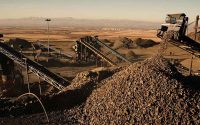Iran did not make any change in its import duty for steel and export duty for iron ore, despite previous announcements, according to the latest annual import-export regulations published by the country’s customs authority.
In December 2016, the deputy minister of industry, mines and trade Jafar Sargheini announced that the government had approved a reduction in the import duty on some flat rolled steel products, S&P Global Platts had reported.
Amir Hossein Kaveh, general secretary of Iran’s Syndicate of Steel Pipe and Profile Manufacturers, emphasized that the reduction in import duty is approved, but has been postponed, maybe for a few months. Perhaps it will be delayed until the presidential elections in May 2017, leaving the next government to decide about it, Kaveh told Platts from Tehran.
Meanwhile, and unexpectedly, the government did not remove the export duty on iron ore pellet either. Iranian miners were informed unofficially in December that the current 15% export duty on pellet would be removed from the Iranian new year beginning March 21, enabling them to export their excess production.
“There is not any change in iron ore and pellet export duty till now, but it could be reviewed after the election,” Keyvan Jafari Tehrani, head of international affairs at Iropex, the Iron Ore Producers & Exporters Association of Iran, told Platts Tuesday.
“Domestic demand for pellet is quite reasonable now; nonetheless, Golgohar and Chadormalou, the largest Iranian iron ore miners, are going to start to export a portion of their iron ore pellet output but it would not be so much,” Tehrani said.
“The export will be limited to some 100,000-150,000 mt/month and by the governmental license for each shipment,” he noted.
Golgohar, the largest Iranian iron ore producer inaugurated its second 5 million mt/year pellet plant in November 2016 and its nominal capacity is 10 million mt/year now.
Iran’s total pellet making capacity is currently 29.5 million mt/year but that is expected to increase to 35 million mt/year within one year, according to Iranian state mines and metal holding, Imidro.
Source: Platts





